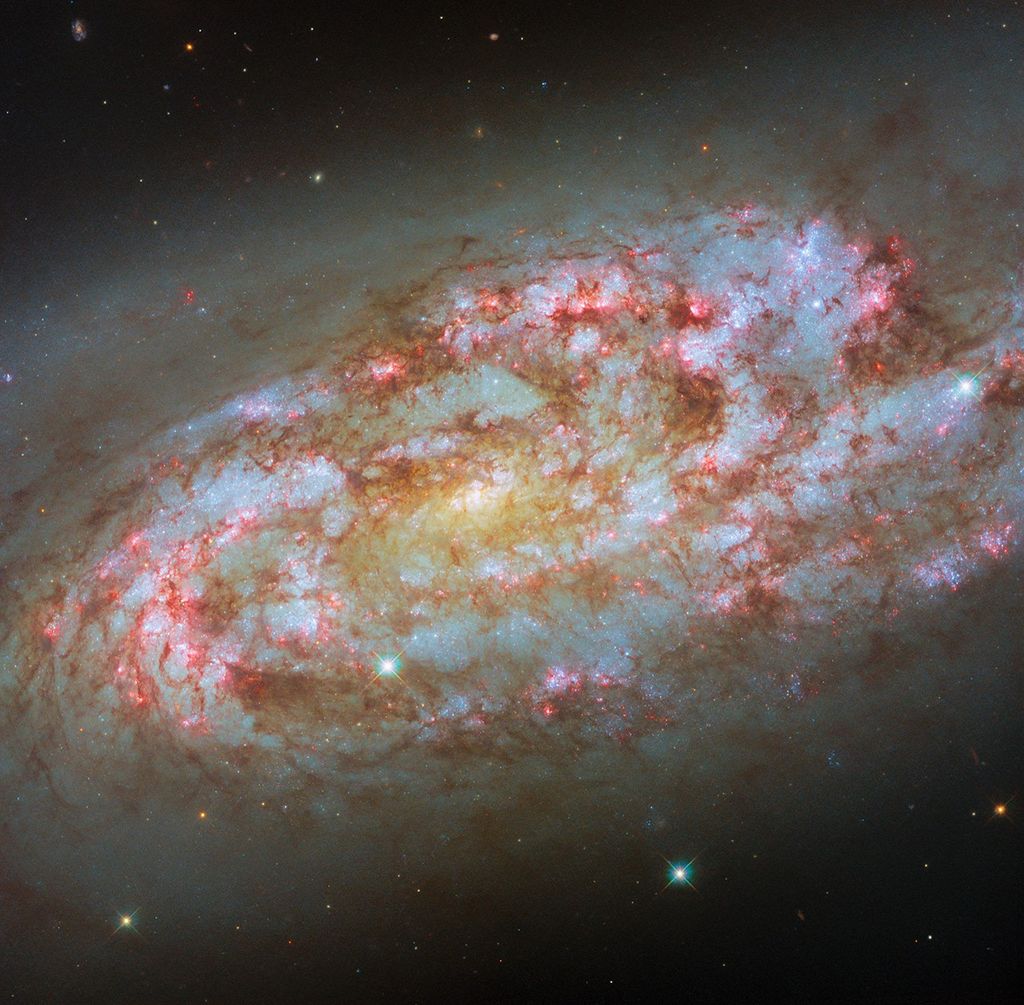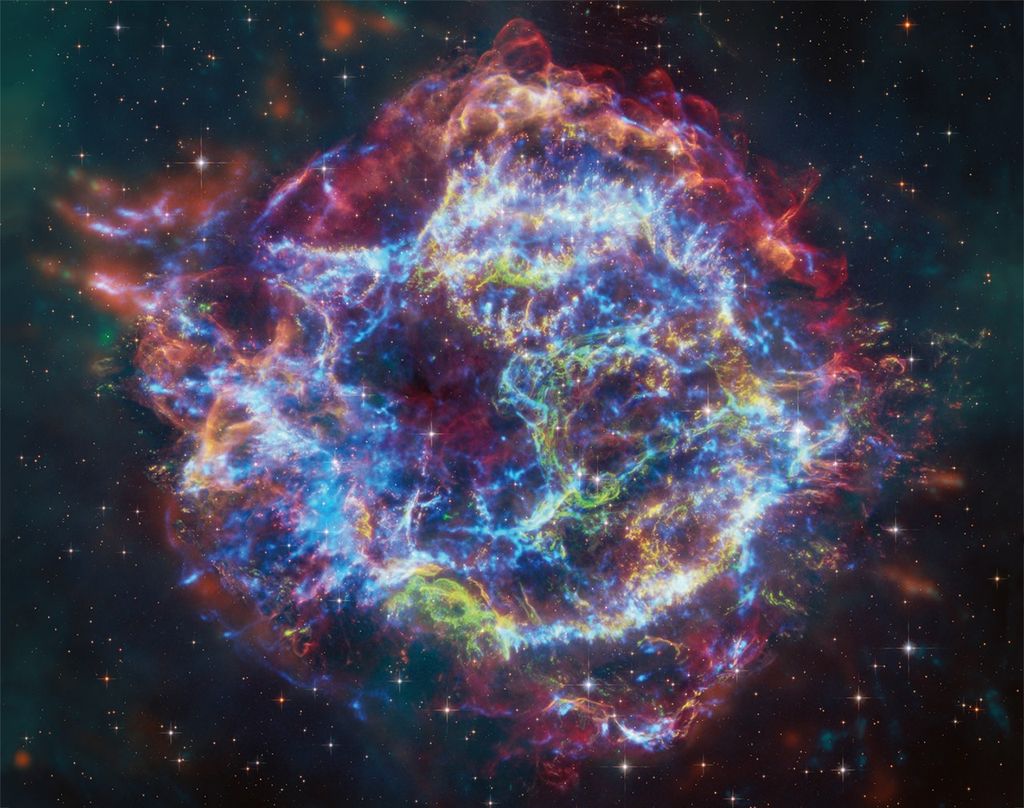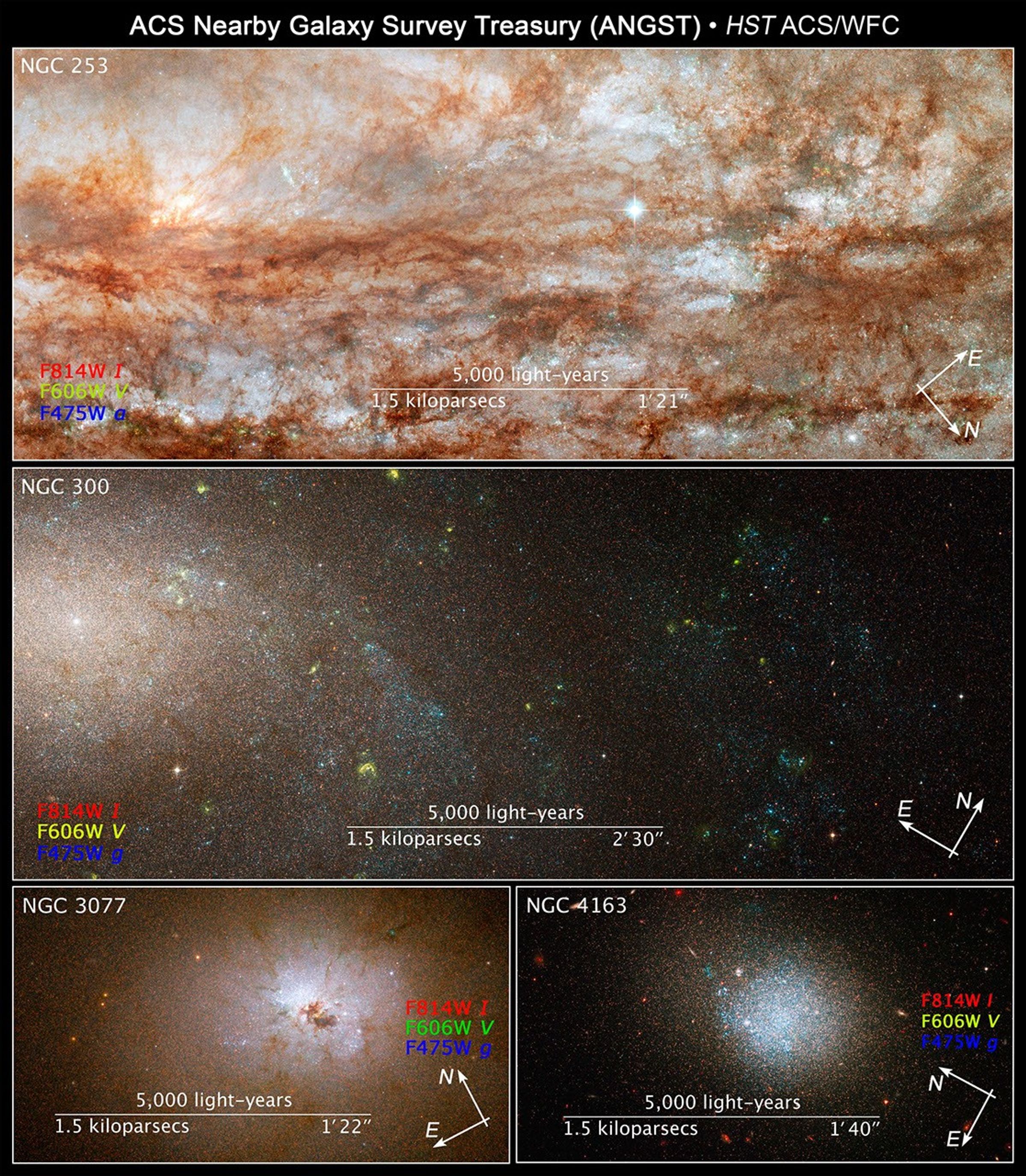1 min read
ANGST Survey Galaxy – NGC 253

About the Object
- R.A. PositionR.A. PositionRight ascension – analogous to longitude – is one component of an object's position.00h 47m 33.11s
- Dec. PositionDec. PositionDeclination – analogous to latitude – is one component of an object's position.-25° 17' 17.58"
- ConstellationConstellationOne of 88 recognized regions of the celestial sphere in which the object appears.Sculptor
- DistanceDistanceThe physical distance from Earth to the astronomical object. Distances within our solar system are usually measured in Astronomical Units (AU). Distances between stars are usually measured in light-years. Interstellar distances can also be measured in parsecs.13 million light-years
About the Data
- Data DescriptionData DescriptionProposal: A description of the observations, their scientific justification, and the links to the data available in the science archive.
Science Team: The astronomers who planned the observations and analyzed the data. "PI" refers to the Principal Investigator.HST Proposal: 10915 J. Dalcanton (University of Washington), and collaborators. - InstrumentInstrumentThe science instrument used to produce the data.HST>ACS/WFC
- Exposure DatesExposure DatesThe date(s) that the telescope made its observations and the total exposure time.September 2006
- FiltersFiltersThe camera filters that were used in the science observations.F475W (B), F606W (V), and F814W (I)
- Object NameObject NameA name or catalog number that astronomers use to identify an astronomical object.NGC 253, Sculptor Galaxy, Silver Dollar Galaxy
- Object DescriptionObject DescriptionThe type of astronomical object.Spiral Galaxy in the Local Volume
- Release DateSeptember 30, 2008
- Science ReleaseWhen It Comes to Galaxies, Diversity Is Everywhere
- Credit

This image is a composite of separate exposures made by the ACS instrument on the Hubble Space Telescope. Three filters were used to sample broad wavelength ranges. The color results from assigning different hues (colors) to each monochromatic image. In this case, the assigned colors are: Blue: F475W (B) Green: F606W (V) Red: F814W (I)
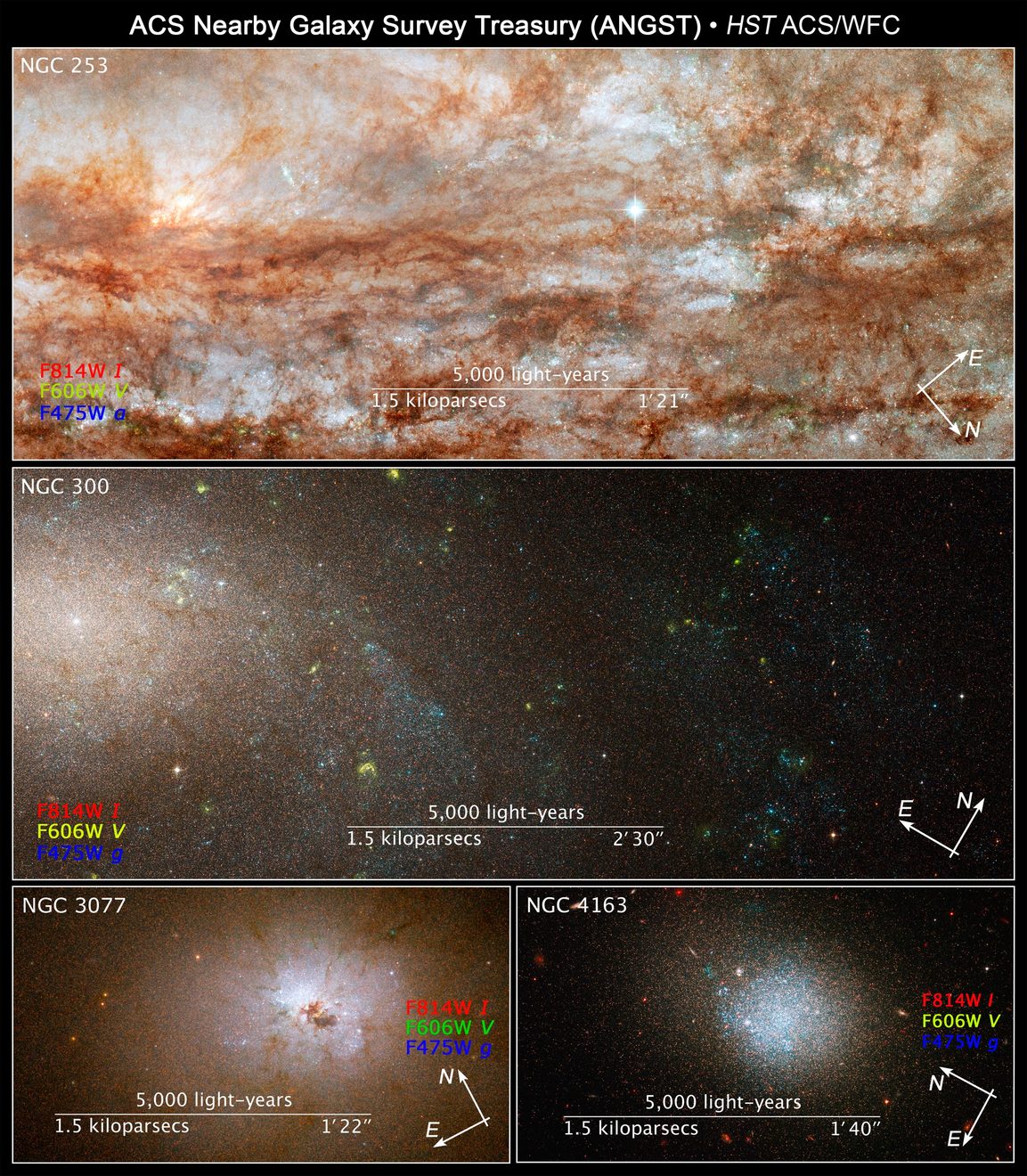
Related Images & Videos
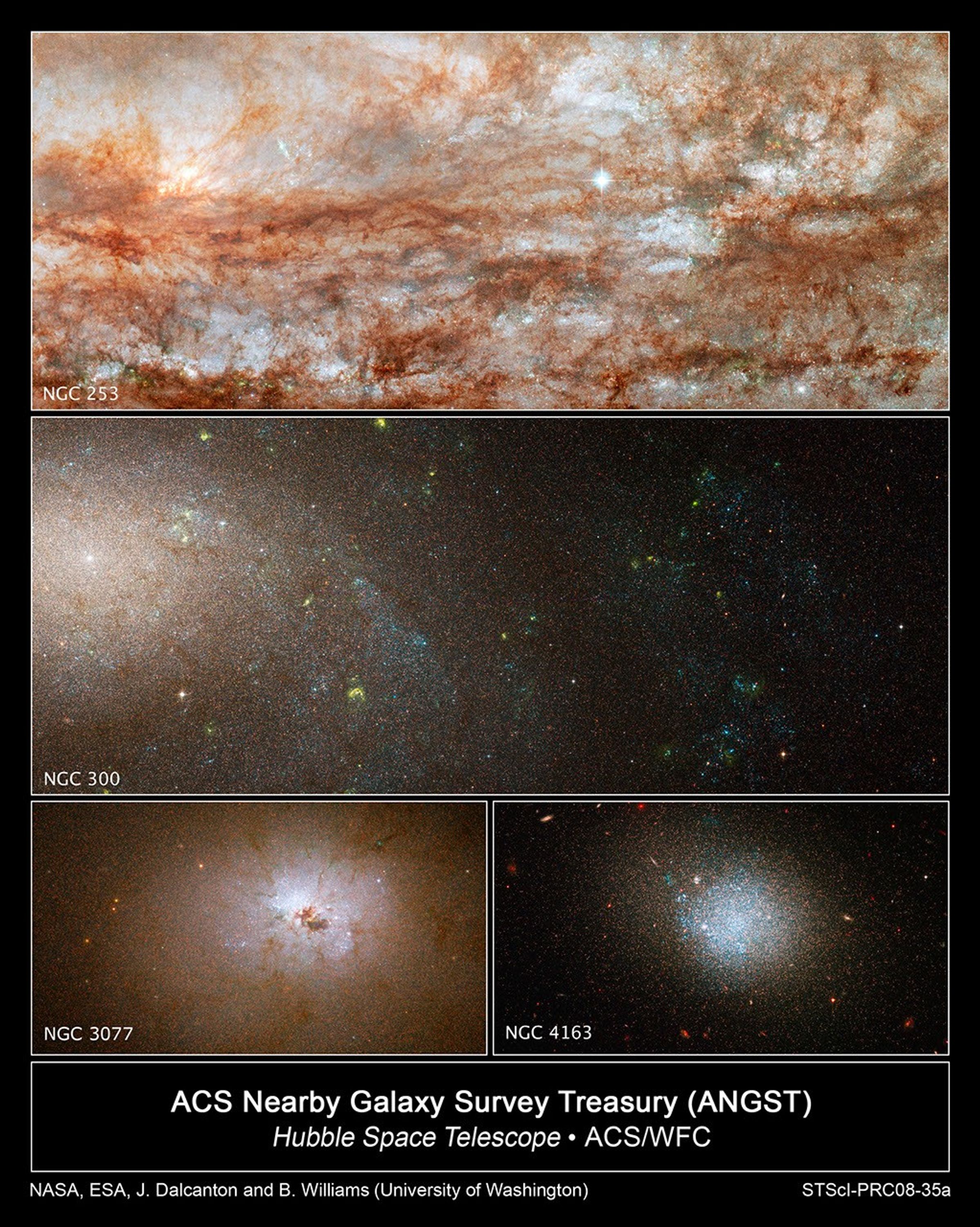
Hubble Snaps Close-up Views of Diverse Galaxies
These images taken with NASA's Hubble Space Telescope are close-up views of four galaxies from a large survey of nearby galaxies. The galaxies have very different masses and sizes and showcase the diversity of galaxies found in the ANGST study. Although the galaxies are...
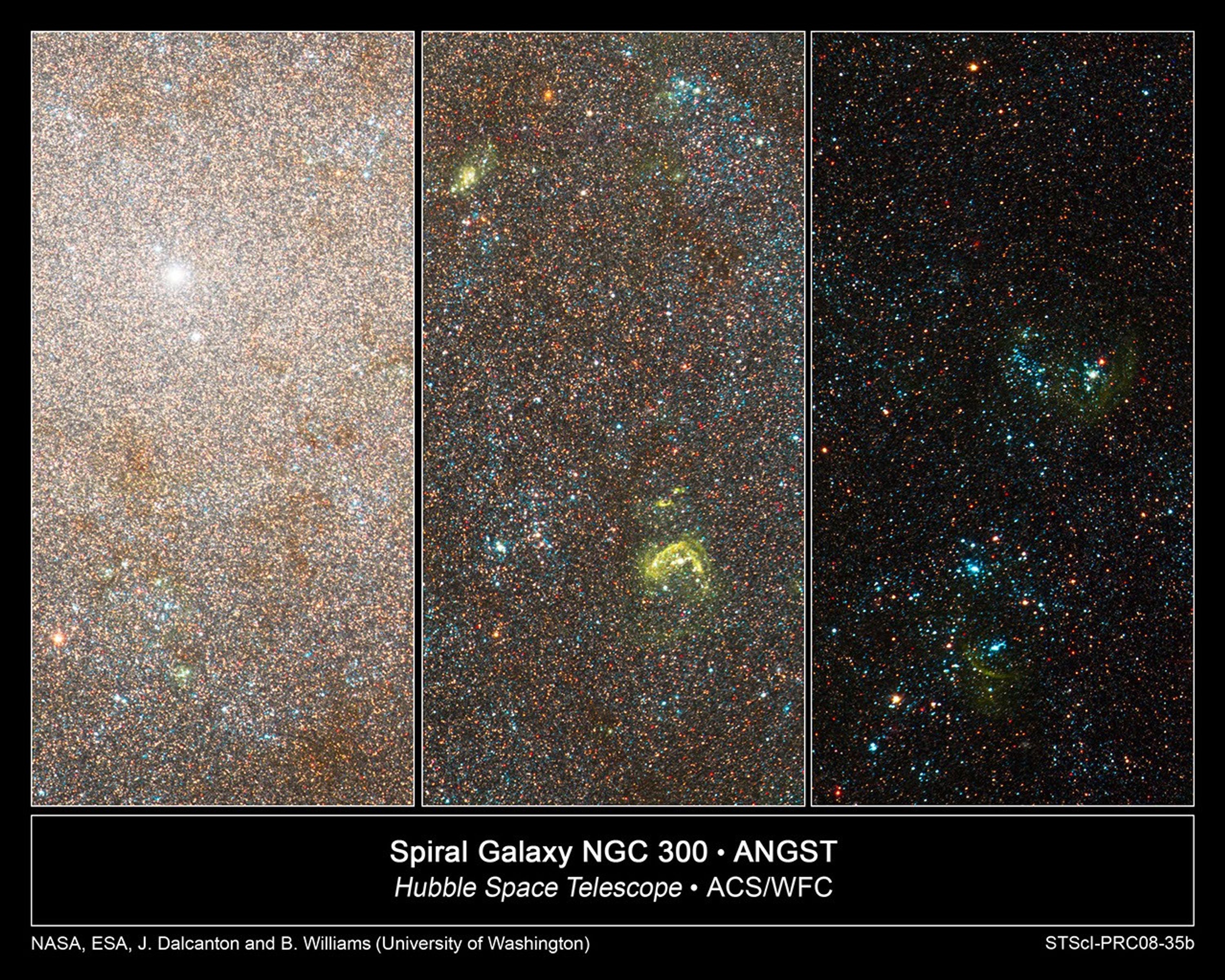
Hubble Resolves Swarms of Stars in Nearby Galaxy
These images taken by NASA's Hubble Space Telescope capture three close-up views of the spiral galaxy NGC 300, a member of the Sculptor Group of galaxies near our Milky Way. NGC 300 resides 7 million light-years from Earth. In the image at far left, Hubble resolves a dense swarm...

NGC 253 from the ANGST Survey
A close-up view from Hubble shows that NGC 253 is ablaze with the light from thousands of young, blue stars. The spiral galaxy is undergoing intense star formation. This image, taken with Hubble's Advanced Camera for Surveys, reveals colors and differing intensities of...
Share
Details
Claire Andreoli
NASA’s Goddard Space Flight Center
Greenbelt, Maryland
claire.andreoli@nasa.gov













